I never know what I am going to write about from one week to the next. That’s the joy of featuring natural events that are happening in real time … so that my readers can simply look out their windows and, with a little luck, experience what they just read about. When it’s time to start a new column, I simply look around to see what is going on about me. So, when a movement in the big white pine outside our kitchen window recently caught my eye, revealing a pair of mourning doves hard at work on a nest, I instantly knew the subject of my next article.
As early in the year as it is, I guess I wasn’t too surprised to see them, as I have been hearing their persistent calls for over a week. Sitting on his “cooing perch” the male emits a soothing cooOOoo-woo-woo-wooo which drifts across the landscape. This mournful call is what gives the bird its telling title of MOURNing not MORNing dove. If you’ve never heard a mourning dove, you might mistake its gentle serenade for an owl.
Appearance
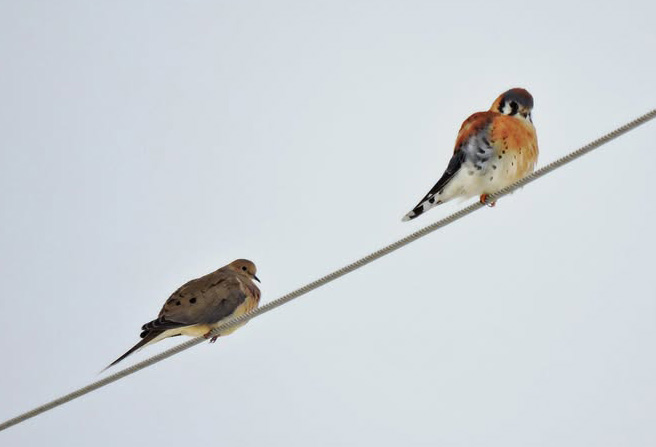
A member of the dove family, Columbidae, the mourning dove (Zenaida macroura) is a graceful bird with a long, slender tail. Compared to its body, it has a disproportionately diminutive head with a small bill and short, stout, rosy-colored legs. Mourning doves are birds of open country and the colors of their plumage allow them to camouflage perfectly with their surroundings. Overall, they are a mixture of buffy brown over their backs with visible black spots on the wings, contrasting with pinkish breasts. Their dark eyes are surrounded by a ring of light blue featherless skin and a distinct semi-circle patch of dark feathers is visible on their cheeks. Males differ from females with their darker greyish-blue crowns and iridescent pink and purple patches on their necks.
Reproduction
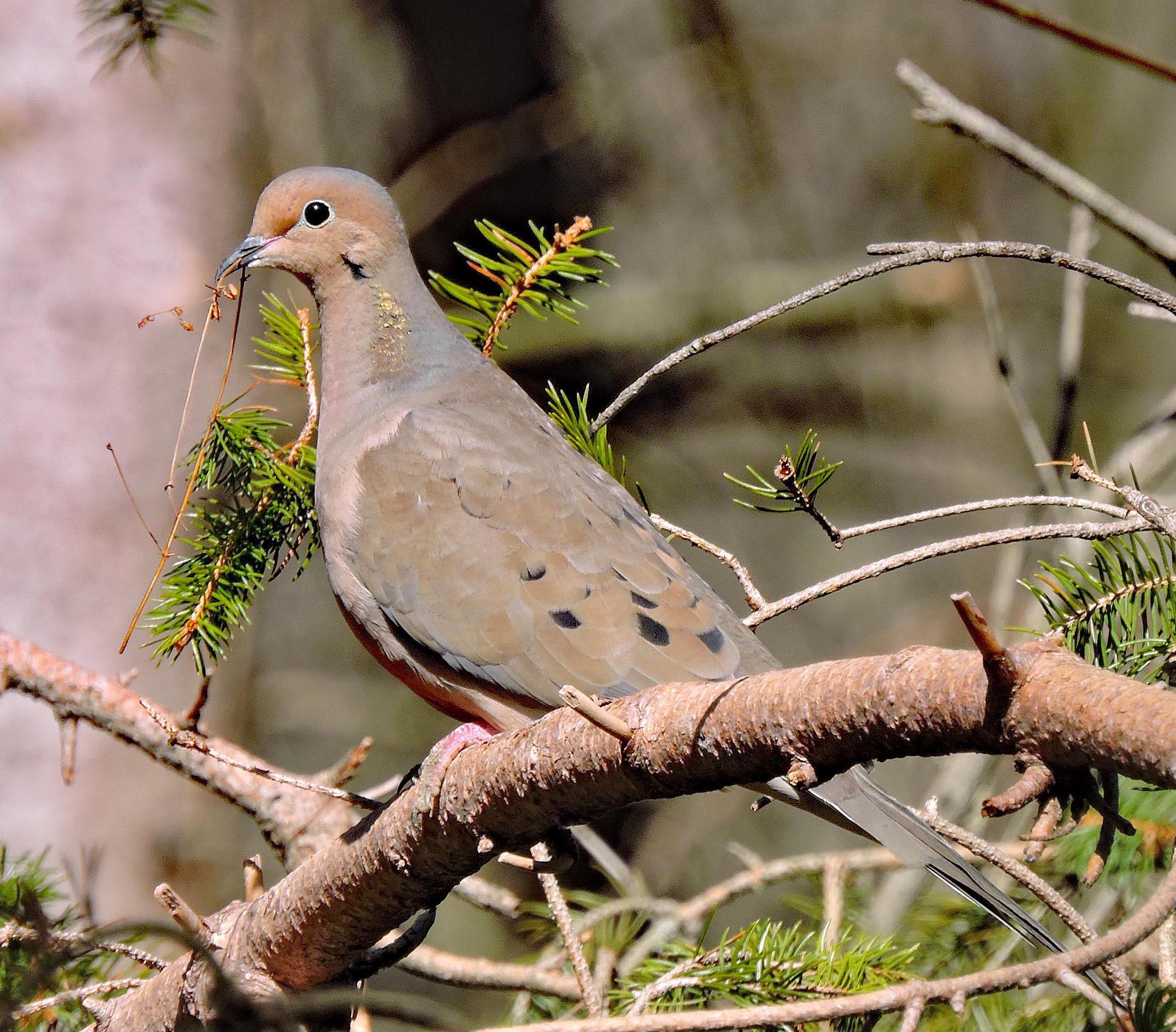
The male mourning dove puts on quite the display when courting a female. Puffing out his breast, he continuously bobs his head up and down while emitting soothing vocalizations, the pair often engaging in reciprocal preening behaviors. Finally, charmed by his efforts, the female allows him to lead her to several potential nest sites from which she will choose.
Although the female exclusively constructs the nest, the male eagerly gathers material, often standing on her back to deliver it to her from above. She is no artist, and the flimsy nest is often constructed of pine needles, dried grasses and small twigs. The birds are not choosy about nest location which could include trees, shrubs, manmade structures or even the ground.
Mourning doves are one of the most prolific bird species in North America, raising up to a whopping six broods in a single year where the climate is warmest. Two eggs are produced in each clutch and the parents share in the incubation duties, which last a mere two weeks. The helpless youngsters, known as squabs, are fed “pigeon milk” for the first three to four days of life. This nutrient-rich food source is a highly specialized secretion produced by the lining of the birds’ crops. Eventually, the chicks are switched over to a seed diet and fledge from the nest at 15 days old.
Habits
As adults, doves feed almost exclusively on seeds of many kinds, spending much time foraging on the ground in open habitats. They are often seen along the sides of roads swallowing small bits of stone, or grit, which are then stored in their crops to help with digestion.
When startled, mourning doves take to the air, their wings emitting a noticeable whistling sound. They are incredibly strong fliers, capable of speeds of up to 55 mph. They can fly bullet straight or make sudden bolts, their long tails trailing behind them. It is also quite common to see mourning doves perched on wires. To the amateur birder, they are often confused with the American kestrel, whose head is much larger and proportionate to its body.
Gamebird
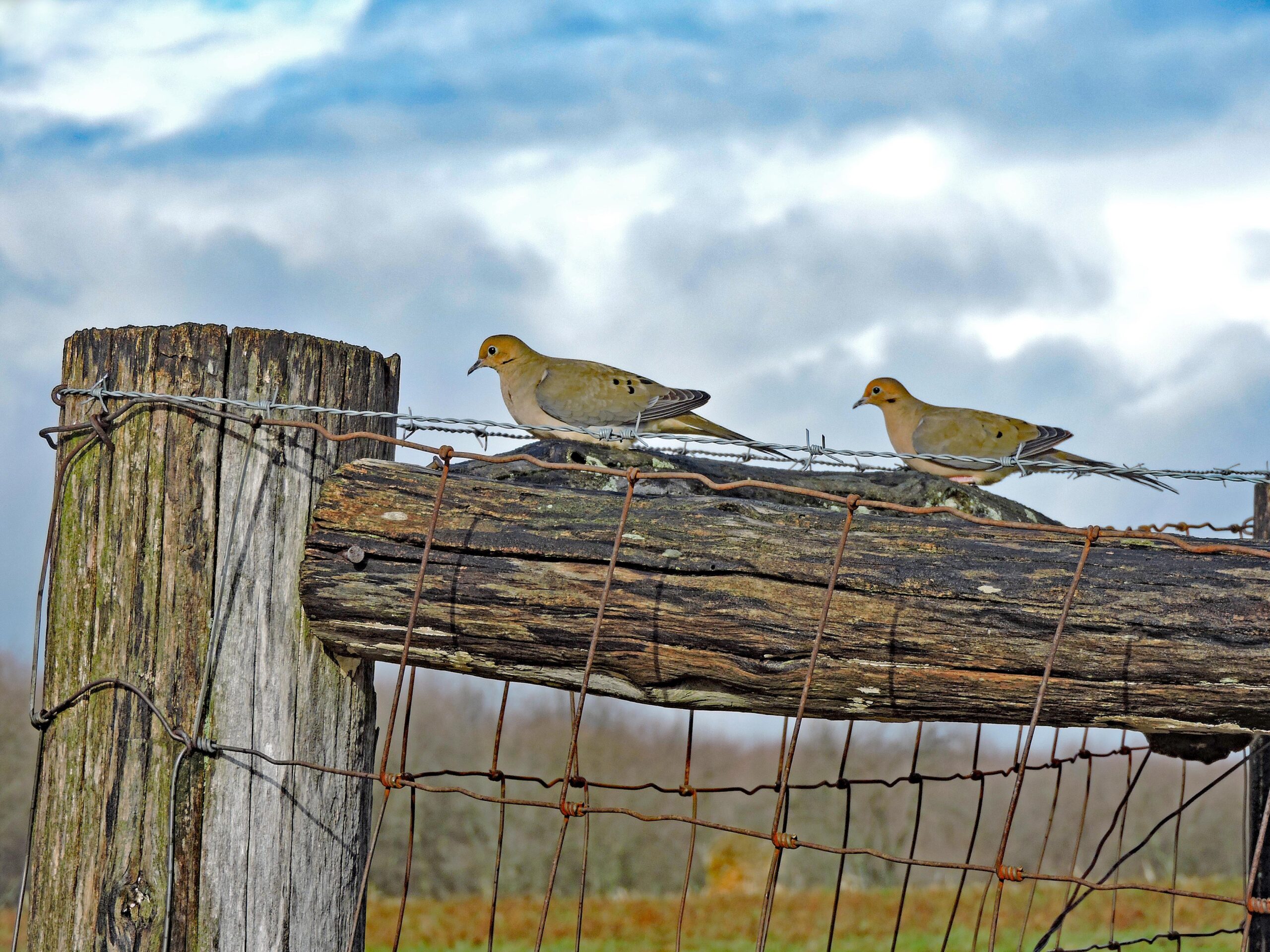
Because it is so prolific, the mourning dove population in the United States is around 350 million birds. Legislation was eventually passed to change the status of the species from a migratory songbird to a gamebird, making them the most frequently hunted species in North America, with a harvest of 20 million to 70 million birds each year. Although they seem to be able to tolerate hunting pressure they do face the greater problem of lead poisoning. In heavily hunted areas with fields planted to attract the birds, lead shot from past hunts is often gobbled up from the ground resulting in death and area declines.
A friend of mine once gave me a bag full of mourning dove meat — tiny breasts that had been filleted off the carcasses. Their size and appearance immediately reminded me of a turkey heart included in the bag of giblets for Thanksgiving. Ultimately, I had to consume around 15 of them to feel like I had even eaten a meal, and the taste, well, it was somewhat like chicken. There are probably hunters who consider mourning dove meat a delicacy, but I would have to imagine that most of them are shot for sport.
The symbolism surrounding doves runs deep throughout many cultures and religions. Since ancient times, doves have been recognized as symbols of peace, love and freedom. Their beauty and gentle nature evoke sentiments of serenity and calm. That being said, I suppose that mourning doves do indeed have a reason to feel sorrowful, for the success of these enduring symbols as a species has ultimately led to their status as a popular gamebird.







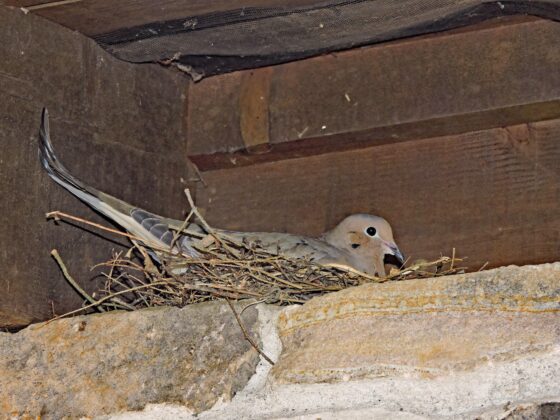
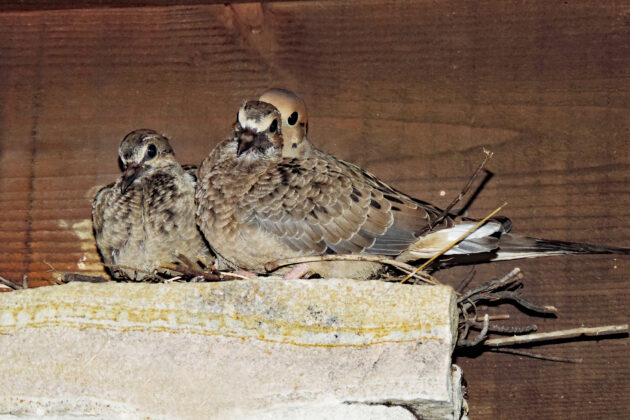






Loved this article on Doves. I’ll be following you!